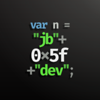|
Doing your own clipping
If anyone else was a bit confused by the examples in TANSTAAFL''s book, this should help you understand how to do this better (as those examples have to be general and should be taken as examples and not cut/paste code).
Here is my clip function:
 Also I have a method for about the easiest mouse mapper ever, which doesn''t require any cursor image like the example in TANSTAAFL''s book, and is about 3 lines of code.
If anyone is interested in that I can post it
Also I have a method for about the easiest mouse mapper ever, which doesn''t require any cursor image like the example in TANSTAAFL''s book, and is about 3 lines of code.
If anyone is interested in that I can post it  Let me know if you have any more questions!
Let me know if you have any more questions!
This topic is closed to new replies.
Advertisement
Popular Topics
Advertisement
Recommended Tutorials
Advertisement







